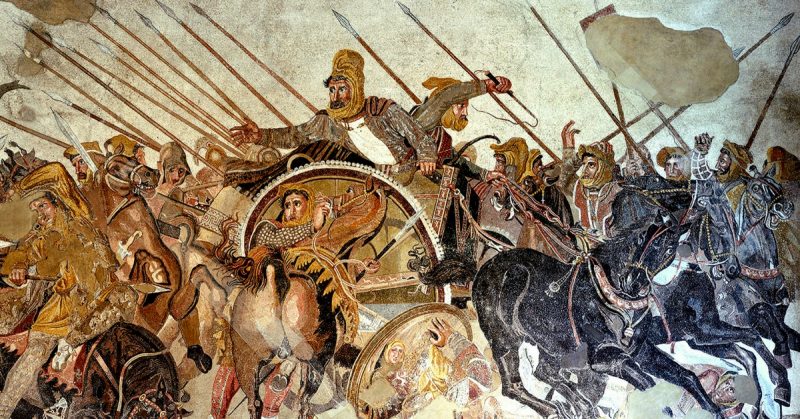In 333 BC, Alexander the Great defeated the Achaemenid King Darius III at the Battle of Issus. It was the beginning of the end for the power of the Achaemenid Persians. It was also one of the occasions when Alexander came closest to defeat.
Alexander Versus Darius
In 334 BC, Alexander the Great began a campaign of conquest against the Achaemenid Empire. He liberated the Greek cities in Ionia and subdued the heart of Asia Minor, soundly defeating the Persians at Granicus along the way.
In the spring of 333 BC, the Persian commander Memnon died. Memnon was the only commander whose competence King Darius III trusted, so he took control of the armies for himself.
Maneuvering for Battle
The maneuvers leading up to the Battle of Issus were as important to the outcome as to what happened on the field.
Alexander did not want to fight Darius in the open, where the Persians could bring their greater numbers to bear. He took up position in a defensible region surrounded by high ground, expecting to attack Darius as he entered through a pass.
Darius knew the ground better. Under cover of bad weather, he drew his troops back, moved around, and got behind Alexander through a different pass. Taken by surprise, Alexander reversed his formations and marched toward battle.
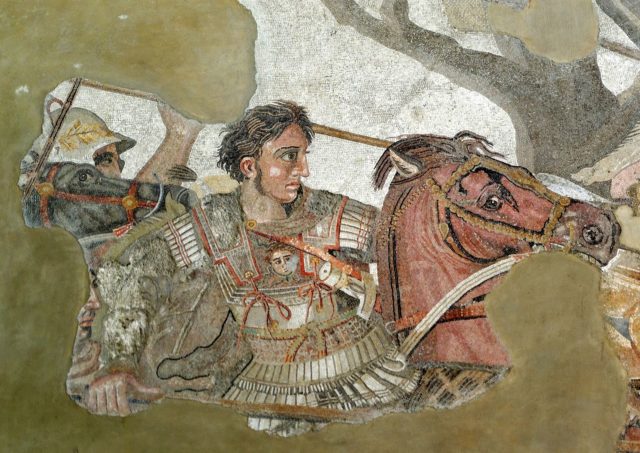
Deployment
The two armies faced each other across the River Pinarus. On Alexander’s left was the sea, on his right challenging terrain. The steep banks of the river meant that in many places it could not be crossed at all and in others only infantry could make the crossing.
Alexander deployed his heavy infantry on the left and center, with most of his cavalry massed beyond a gap to the right.
Darius’ main line was made up of Greek mercenaries opposite Alexander’s left. The Persian infantry was upstream from them with a mixture of infantry and cavalry on both flanks.
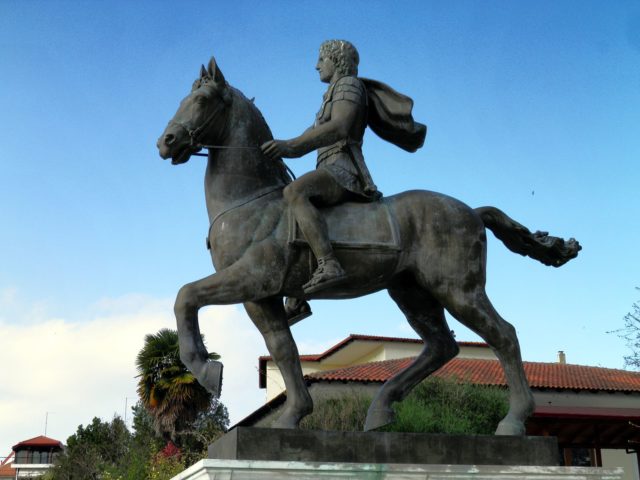
Opposite Strategies
Alexander’s plan was to use heavy infantry to penetrate the center of the Persian lines.
Darius, on the other hand, was focused on the flanks. He hoped to push Alexander’s formations back at the edges and envelope him.
For Alexander, the challenge was to push forward without becoming over-extended and surrounded.
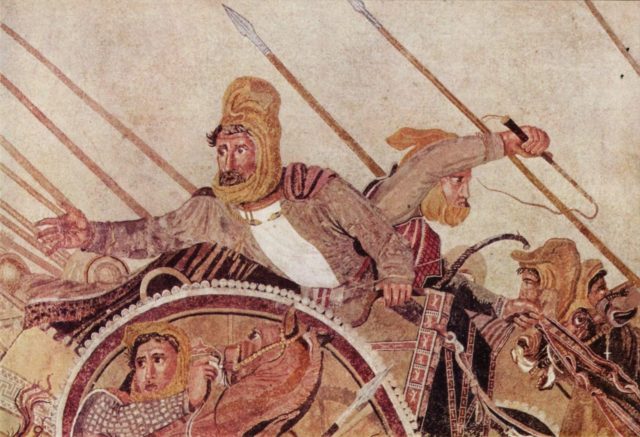
Cavalry Manoeuvres
On the Macedonian right, both sides had massed the bulk of their cavalry. Darius realized that the small crossing he was relying on there would force his troops to bunch up, making them vulnerable. It was not a good place to use cavalry.
He quickly reorganized, rushing most of his heavy cavalry to the opposite flank while he headed for the center. On seeing this, Alexander hurried to reposition his cavalry, so as not to leave his infantry vulnerable to a cavalry attack on the left.
An Opening Emerges
The Macedonian heavy infantry advanced to engage Darius’ Greek mercenaries. It drew them away from the shoreline, leaving their flank exposed. Light troops moved to cover them, but it had created a vulnerability. If Darius could bring his cavalry to bear swiftly and decisively, he could punch a hole through the Macedonian flank.
Repositioning
Realizing there was no space for a mass cavalry attack near the high ground, both sides frantically repositioned.
Alexander created a small flanking force to hold off any Persian attack on his right. Then he moved his cavalry over to the left, instructing them to stay hidden behind his phalanxes.
The aim was to achieve surprise. If the weak left flank held, so much the better. If it fell, the cavalry could ambush the Persians as they came through the gap.
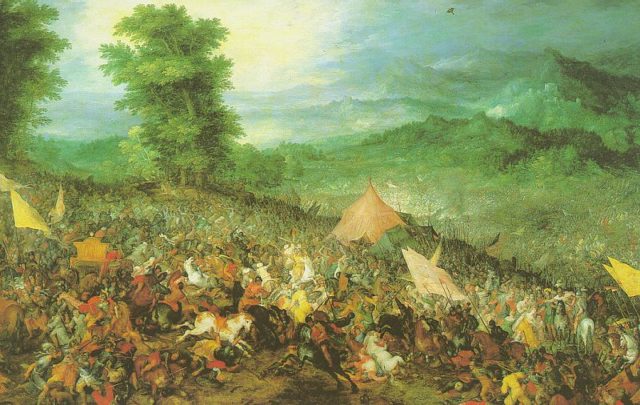
Triumph on the Right
On the right, Alexander’s troops pushed the Persians back from the ford and crossed the river. While light troops provided cover, Alexander formed his elite Companion cavalry up into wedges with him at the head. Emerging from behind the skirmishers, they endured the fire of archers to smash the remaining Persian cavalry facing them.
Further down the line, a band of Macedonians crossed the river. Darius and his cavalry were surrounded. The King fled.
Fighting on the Left
On the left, the shape of the riverbank had forced Alexander’s phalanxes to advance at an angle. They hit the flank of the Persian central formations, smashing them and causing Darius’ flight.
It also left them with their flank exposed to the Greek mercenaries. The mercenaries attacked, inflicting heavy losses on the Macedonians.
With the Persian center collapsing, the Macedonians wheeled around and enveloped the mercenaries’ flank. The tables had been turned.
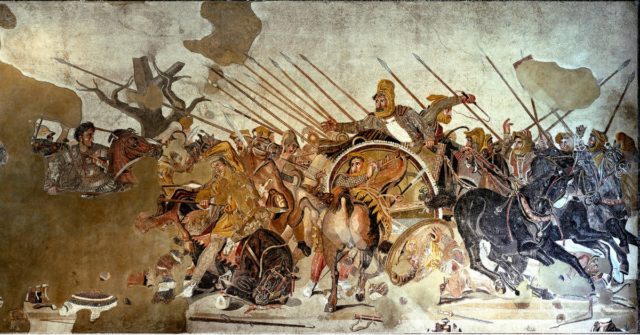
Victory and Pursuit
With Darius on the run, Alexander saw an opportunity to win the war at a stroke. Taking 1,000 of his cavalry, he galloped in pursuit of the fleeing King. Darius escaped, and Alexander returned to finish the fight.
The Macedonian troops on the left had rallied following their beating at the hands of the Greek mercenaries. They pushed the mercenaries back, driving them from the river bank but they were too exhausted to pursue the retreating foes, and the mercenaries retreated in good order.
The infantry turned to looting Darius’ camp.
The battle was over. Alexander had driven off his enemies, humiliated Darius, and inflicted heavy losses. The Persians suffered three times as many casualties as the Macedonians.
Experience and Execution
Alexander’s success came down to experience and execution.
Both commanders had sound plans. Alexander, however, had more expertise in the field and so did his men. They were able to execute their maneuvers more effectively.
Once the battle got going, Alexander was able to seize the opportunities he needed. He adapted to Darius’ moves, countering each one.
Issus was a close call for Alexander. His enemy got behind him, and his left flank almost collapsed. He pulled victory out of desperate circumstances, once more proving why he was the Great.
Source:
General Sir John Hackett, ed. (1989), Warfare in the Ancient World.
